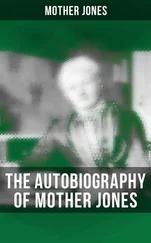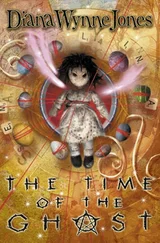There are better ways of looking at the future of selection than just to multiply examples of how it works. Natural selection acts only on differences. If everyone lived to adulthood, found a partner and had the same number of children (whether that number was one, two, or ten) it could not operate. We do not need to know what genes are involved to estimate how important selection might be. Simple changes in the pattern of birth and death reveal its actions in the past, the present and, perhaps, in the future.
In affluent countries, the differences between families in how many people survive have much decreased. This much reduces the power of the evolutionary engine. Ten thousand — even two hundred — years ago, the struggle for existence meant a lot. Skeletons from cave cemeteries show that few lived to be more than twenty. If ancient fertility was like that of modern tribal groups each female had about eight children, most of whom died young. For nine tenths of human evolution, society was like a village school, with lots of infants, plenty of teenagers and a few — probably harassed — adult survivors. Almost every death was potential raw material for selection as it involved someone young enough still to have a hope of passing on their genes. Now, ninety-eight our of every hundred new-born British babies live to the age of eighteen, so that selection acting through the deaths of the young once its main mode of operation has almost disappeared.
Not until the past few years have humans lived as long as they are able. For the first time in history, most people die old, perhaps as old as biology allows. Life expectancy has risen from forty-seven to seventy-six years in the past century. Progress has now stopped, for some social classes at least. In the USA in 1979 a white woman of sixty-five could expect to five for another eighteen and a half years. In 1999, the figure was almost the same. In Britain, even if all infectious diseases and all accidental deaths were to be eliminated by government decree, average life expectancy would go up by only a little more than a year. There is still room for progress because of class differences in health. A baby born to an unskilled worker in Britain can expect to live for eight years less than one born to a professional person, a difference which, to our national shame, was until recently increasing. In spite of the effects of class, the prospects for any dramatic improvement in longevity are dim. George Bernard Shaw was wrong. We will not go back to Methuselah.
This is important for the evolutionary future. The increase in the number of old people means that more people die for genetical reasons than in earlier times (in the main because fewer are killed by violence or by infection) but, paradoxically, it also means that selection is weaker. The genes that kill are those for cancer or heart disease, which act late in life. Those who die have already passed on their inheritance. Natural selection is much less powerful on genes such as these than on those that kill the young.
Other changes in the balance of birth and death also reduce its opportunities. Few modern peoples are as fertile as they once were. The Hutterites in North America wish for the largest possible family for religious reasons but even they, living in a healthy society as they do, do not often have more than ten children. For most of history — when families of that size were common — people had as many offspring as possible. Only recently has that number begun to decrease.
The new pattern of existence (with fewer children than ever before but most people lasting until the biological clock runs down) emerged about twenty generations ago, compared to the six thousand or so since we first appeared on earth. As a result, evolution has changed the way it works. Selection nowadays acts more on fertility than on survival.
Differences in fertility among families shot up as birth control became popular. The upper classes adopted the idea well before the lower orders. The French aristocracy caught on and reduced the number of children per marriage from six to two in just a hundred years. The Victorians differed in how fertile they were. Victoria herself did well, and Mr Quiverful, in Trollope's Barchester novels, had a dozen children at a time when other clergymen were discreetly limiting their own families to two or three. Now that birth control is widespread, the difference between families has dropped again, but selection through variation in the number of children born is, for the first time in history greater than that working on the number that survive. As a result, the evolutionary fate of our genes depends more on how many children we choose to have than on the chances of their staying alive.
All the best-understood forces of selection — disease, cold or starvation — act on survival rather than on fertility. The shift in the balance of the two may bring in new and unpredictable evolutionary forces. Perhaps inherited variations in the age of reproduction will become important,
399 as those who mature young squeeze in more generations than those who delay their first birth. There has been a drop in the age at which girls become mature {although, in opposition to this trend, western women now marry five years later than they did half a century ago). What this will do to them is hard to say. A good general rule in biology is that nobody gets a free lunch: success in one walk of life must be paid for by failure in another. Fruit-fly experiments suggest that a shift from high survival towards high fertility involves a trade-off in which those that produce lots of eggs die young. The same may happen to humans.
All this is speculation about details. It is clear than natural selection has ebbed away. Modern India is a microcosm of how evolution has lost its chance to mould the human condition. The continent contains a wide range of cultures, from almost tribal hill-peoples to affluent urbanites. It embodies the history of social change in birth and death over the past several thousand years. Differences among individuals in the various groups in the chances of survival and in their numbers of children show that natural selection has lost eighty per cent of its potential in middle class town-dwellers compared to their fellow-citizens who still follow a tribal way of life.
Weakened — perhaps temporarily — as it may be, there is no reason to think that natural selection will change its tactics. Rather than making a new start by designing an ideal solution for a particular problem it will, as always, build on our imperfections. History gives little reason to hope that evolution will act as the agent of human perfectibility. It will never make humanity superhuman.
The raw material of evolution and the power of its prime mover are both running out and, as a result, the rate of change is slowing down. Another shift in modern society is bound to influence our prospects. It has to do with the geography of mating. For most of history, almost everyone had to marry the girl (or the boy) next door, because they had no choice. Society was based on small bands or isolated villages and marriages were within the group. In many places, populations were stable for many years and, as a result, became quite inbred. Almost nobody moved. The DNA in the brains of American Indians, drowned in a peat bog in Florida, show that people who died a thousand years apart had almost the same genes. There was little migration and the Indians had no option but to marry their relatives.
This pattern persisted in much of the West until a few years ago and still holds in many parts of the world. In most places it is changing. An increase in mating outside the group is the most dramatic shift in the developed world's demographic history. The effect has become stronger and stronger and will have more effect on geneti-cal health than anything medicine is able to do. It will also slow the rate of evolutionary advance.
Читать дальше
Конец ознакомительного отрывка
Купить книгу












